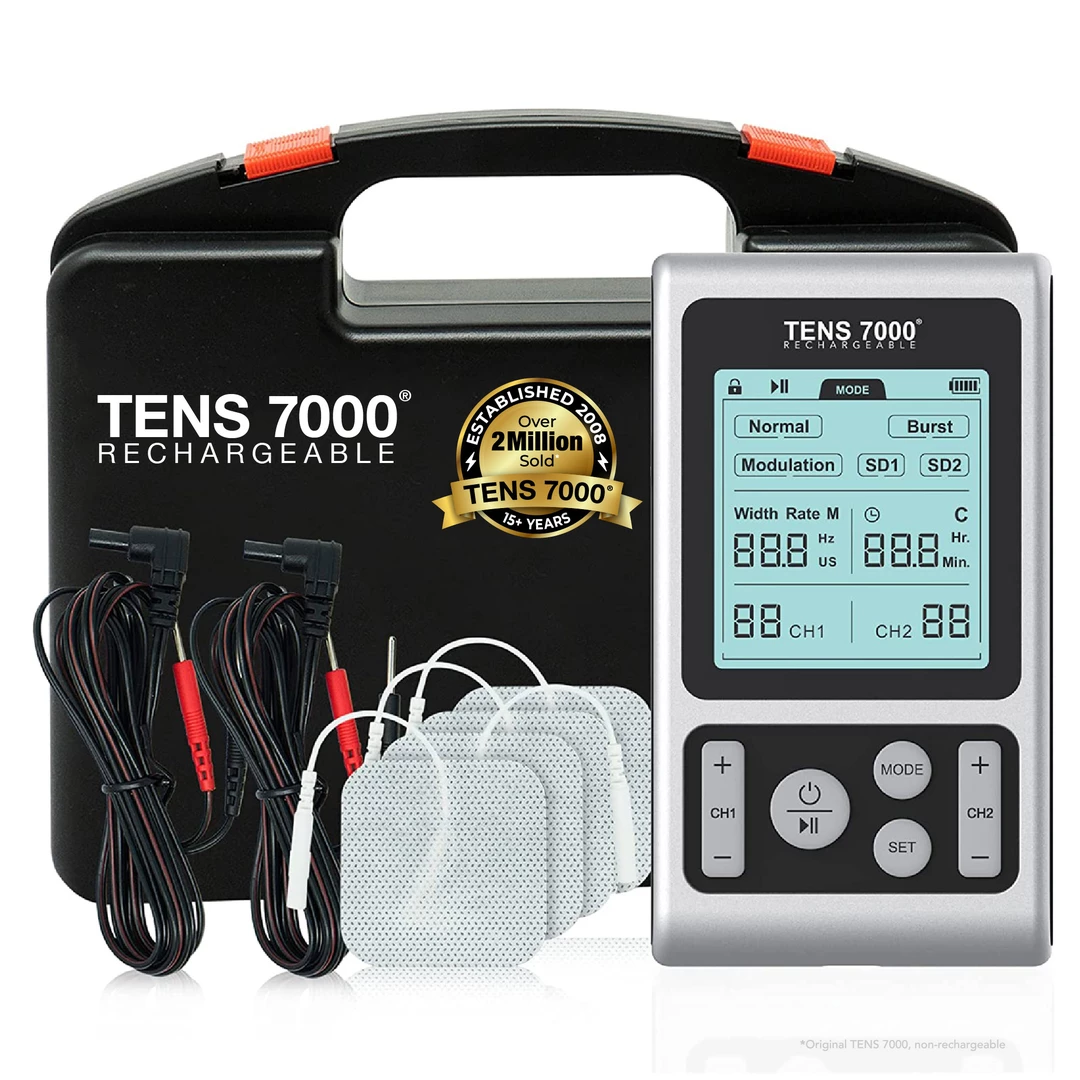Introduction
Lower back pain is one of the most common physical ailments affecting people of all ages. Whether the pain is due to muscle strain, injury, or chronic conditions, it can significantly impact quality of life. The tens 7000 rechargeable unit electrode placement for lower back pain is a popular device that provides drug-free pain relief by sending electrical pulses to the nerves. Proper electrode placement is crucial to maximize the effectiveness of this treatment. In this guide, we’ll explore how to use the TENS 7000 for lower back pain and the best electrode placement techniques.
Understanding the TENS 7000 Unit
What is a TENS Unit?
TENS stands for Transcutaneous Electrical Nerve Stimulation, a therapy that uses low-voltage electrical currents to relieve pain. The TENS 7000 is a popular model, known for its rechargeable capability and customizable settings. It comes with a handheld controller, electrodes, and adjustable intensity levels, making it suitable for at-home pain management.
Features of the tens 7000 rechargeable unit electrode placement for lower back pain
- Rechargeable battery: Long-lasting power for extended use
- Multiple intensity levels: Adjust the pulse strength according to your comfort
- Customizable settings: Offers different modes like burst, modulation, and normal for tailored pain relief
- Portable and user-friendly: Compact design for easy use at home or on the go
Benefits of Using a TENS Unit for Lower Back Pain
- Non-invasive and drug-free pain relief
- Customizable therapy that can be adjusted to target different types of pain
- Portable solution for managing chronic or acute pain at home
- Can be used alongside other pain management treatments
How TENS Therapy Works for Lower Back Pain
Mechanism of Action: How TENS Relieves Pain
The TENS unit works by sending small electrical impulses through the skin to the nerves beneath. These electrical signals interfere with the body’s natural pain signals, blocking pain messages from reaching the brain. Additionally, TENS therapy stimulates the release of endorphins, the body’s natural painkillers.
Effectiveness of TENS for Chronic and Acute Lower Back Pain
Studies have shown that TENS therapy can be effective for both chronic conditions, such as degenerative disc disease, and acute pain like muscle strains or injuries. Regular use of the TENS 7000 can help reduce pain and improve mobility in people suffering from lower back discomfort.
Electrode Placement for Lower Back Pain
Why Electrode Placement is Crucial for Effective Pain Relief
The success of TENS therapy largely depends on the correct placement of the electrodes. If placed correctly, the electrodes can directly stimulate the nerves responsible for the pain, providing targeted relief. Misplaced electrodes, on the other hand, may not provide the desired effects and could lead to discomfort.
General Guidelines for Electrode Placement on the Lower Back
- Always place electrodes on clean, dry skin to ensure proper adhesion and conduction.
- Avoid placing electrodes directly on the spine. Instead, position them on the muscles surrounding the painful area.
- Keep the electrodes at least one inch apart to prevent overlap of electrical currents, which can cause discomfort.
Step-by-Step Guide: Proper Electrode Placement for Lower Back Pain
Preparing the Skin and Electrodes
- Clean the skin with water and dry it thoroughly to remove oils or lotions that may interfere with the electrodes’ adhesion.
- Ensure that the electrodes are clean and in good condition for optimal conductivity.
- Apply the electrodes firmly but gently to ensure they stick without causing irritation.
Placement Options Based on Pain Location
- For pain in the lower back’s center: Place one electrode on the right side of the spine and the other on the left side, both targeting the muscles around the pain site.
- For pain on one side of the lower back: Position one electrode near the area of pain and the other diagonally across from it.
- For widespread lower back pain: Use a cross pattern, placing two electrodes on either side of the lower back to cover a larger area.
Alternative Electrode Placement Techniques
Cross Pattern Technique
The cross pattern technique involves placing the electrodes in an “X” shape around the painful area. This technique helps target the pain from different angles, providing comprehensive relief.
Parallel Placement Technique
For more localized pain, you can position the electrodes in a parallel pattern, with both electrodes placed horizontally or vertically on either side of the pain. This method targets the pain more directly.
Overlapping Pain Zones: When to Adjust Electrode Position
If you experience pain in overlapping areas, you may need to reposition the electrodes slightly or add additional electrodes (if your TENS unit supports more than two) to ensure full coverage of the painful area.
Safety and Precautions When Using TENS for Lower Back Pain
Tips for Safe Use of the TENS 7000 Unit
- Avoid placing electrodes directly on the spine or over broken skin.
- Do not use the TENS unit while sleeping or during activities that require full attention (e.g., driving).
- Start with low intensity levels and gradually increase to a comfortable level.
- Always follow the manufacturer’s instructions for safe and effective use.
When to Avoid TENS Therapy
- Do not use TENS therapy if you have a pacemaker or other implanted medical devices, as the electrical currents may interfere.
- Avoid using TENS if you are pregnant or have any skin infections around the treatment area.
- Consult your doctor before using a TENS unit if you have any underlying medical conditions.
Combining TENS Therapy with Other Treatments
TENS Alongside Physical Therapy
For those recovering from an injury or dealing with chronic lower back pain, TENS therapy can be used in conjunction with physical therapy. It can help alleviate pain and improve mobility, making physical therapy exercises easier to perform.
Heat, Cold Therapy, and Stretching Exercises
Using heat or cold therapy along with TENS can enhance pain relief. Stretching exercises can further improve muscle flexibility, reduce tension, and support long-term back health.

Leave a Reply